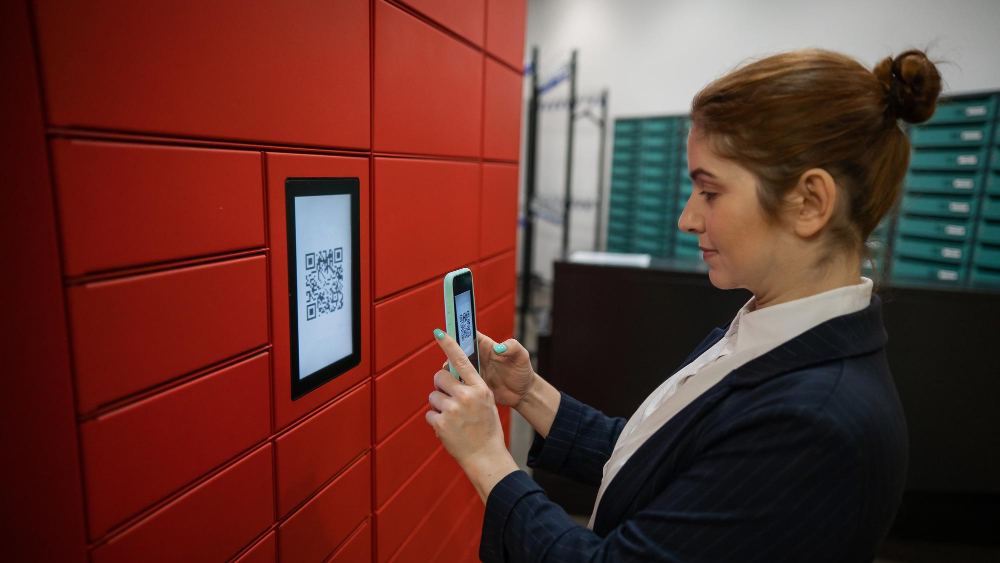-
Workplace
The Role of Technology in Modern Office Spaces
From enhancing productivity to fostering collaboration, technological advancements have revolutionized the way we work. This blog post explores the various ways technology is transforming office environments and the benefits it brings to businesses and employees alike.
1. Smart Office Systems
Smart office systems integrate various technologies to create a more efficient and comfortable working environment. These systems include automated lighting, climate control, and security features that can be controlled remotely. By optimizing energy usage and creating a more comfortable workspace, smart office systems help improve employee satisfaction and reduce operational costs.
Example: Smart thermostats adjust the temperature based on occupancy, ensuring that meeting rooms are always at the ideal temperature when in use, while conserving energy when vacant.

2. Collaboration Tools
Collaboration tools such as video conferencing software, project management platforms, and instant messaging apps have become essential in modern office spaces. These tools facilitate seamless communication and collaboration among team members, regardless of their physical location.
Example: Platforms like Slack and Microsoft Teams allow employees to communicate in real-time, share files, and collaborate on projects, making remote work and cross-departmental collaboration more efficient.

3. Flexible Workspaces
Technology has enabled the rise of flexible workspaces, where employees can choose where and how they work. This includes co-working spaces, and remote work options. Flexible workspaces are equipped with the necessary technology to support different work styles and preferences.
Example: Companies offer fully equipped co-working spaces with high-speed internet, conference rooms, and office supplies, allowing businesses to scale up or down as needed without long-term commitments.

4. Enhanced Security
Modern office spaces leverage advanced security technologies to protect sensitive information and ensure a safe working environment. This includes biometric access control, surveillance systems, and cybersecurity measures to safeguard digital assets.
Example: Biometric access control systems use fingerprint or facial recognition to grant access to secure areas, ensuring that only authorized personnel can enter.

5. Health and Well-being
Technology also contributes to the health and well-being of employees. Wearable devices and wellness apps can monitor physical activity, encourage healthy habits, and provide insights into overall well-being. Additionally, ergonomic office furniture and equipment can be adjusted to suit individual needs.
Example: Standing desks with programmable height settings allow employees to alternate between sitting and standing throughout the day, promoting better posture and reducing the risk of health issues associated with prolonged sitting.

6. Data-Driven Decision Making
The use of data analytics in office spaces helps businesses make informed decisions. By collecting and analyzing data on space utilization, employee behavior, and operational efficiency, companies can optimize their office layouts and resource allocation.
Example: Sensors embedded in office furniture and equipment can track usage patterns, providing insights into which areas are underutilized and which are in high demand. This data can inform decisions about office redesigns or expansions.
Conclusion
The integration of technology in modern office spaces has transformed the way we work, offering numerous benefits such as increased efficiency, enhanced collaboration, and improved employee well-being. As technology continues to evolve, businesses must stay ahead of the curve by adopting innovative solutions that cater to the changing needs of the workforce. By embracing technology, companies can create dynamic, productive, and flexible work environments that drive success in the digital age.
-
Prepare Your Office Space for the Upcoming Summer
Summer is just around the corner, and as temperatures rise, so does the need to create a comfortable and efficient workspace for your employees. A well-prepared office can boost productivity, enhance employee satisfaction, and even save on energy costs.
Here are some essential tips to help you get your office space ready for the summer months.
Optimize Your Cooling System
As the summer heat approaches, it’s crucial to ensure your cooling system is in top shape. Schedule a comprehensive maintenance check for your air conditioning system to confirm it’s running efficiently and effectively. This includes cleaning filters and ducts to improve airflow, which not only enhances performance but also reduces energy consumption.
Additionally, consider investing in smart thermostats. These advanced devices allow you to better control the office temperature by setting cooling schedules based on office hours and occupancy, ensuring a comfortable environment while optimizing energy use.

Improve Ventilation
Good ventilation is key to maintaining a healthy and comfortable office environment, especially during the summer. Enhancing indoor air quality can be achieved by installing air purifiers and ensuring proper ventilation throughout the workspace. This can help reduce the risk of summer colds and allergies, keeping your team healthy and productive.
If your office layout allows, make use of natural ventilation by opening windows during cooler parts of the day to let in fresh air, creating a more pleasant and refreshing atmosphere.

Lighting Adjustments
The type of lighting in your office can significantly impact both comfort and energy costs during the summer. Replace traditional light bulbs with energy-efficient LED lighting, which produces less heat and helps keep the office cooler. This simple switch can also lead to substantial savings on energy bills.
Moreover, maximize the use of natural light by rearranging workstations to take advantage of sunlight. Natural light not only reduces the need for artificial lighting but also improves mood and productivity among employees.

Refresh Office Decor
A fresh, cool environment can make a significant difference in how your office feels during the summer. Consider giving your office a new look with a coat of paint in cool, calming colors like blues or greens. These colors can create a more relaxed atmosphere that counteracts the summer heat.
Additionally, adding indoor plants can enhance the office environment. Plants improve air quality and add a touch of nature, making the space more inviting and lively.

Hydration Stations
Keeping hydrated is crucial in hot weather, so ensure your office has easy access to cold drinking water. Installing water coolers in convenient locations encourages employees to stay hydrated throughout the day.
Additionally, stocking up on healthy, hydrating snacks like fruits and vegetables can help employees maintain their energy and focus. Providing these refreshments shows that you care about their well-being, which can boost morale and productivity.

Dress Code Flexibility
As temperatures rise, consider implementing a more flexible dress code to help employees stay comfortable. Allowing lighter, breathable fabrics can make a significant difference in employee comfort and overall mood.
Creating casual break areas where employees can relax and cool down during breaks can also contribute to a more comfortable and enjoyable work environment. These areas can become popular spots for informal meetings and social interactions, fostering a positive office culture.

Energy Efficiency
Improving energy efficiency is not only good for the environment but also helps keep the office cooler. Encourage employees to turn off computers and other office equipment when not in use to save energy and reduce heat output.
Conducting an energy audit can help identify areas where you can improve efficiency. This might include upgrading to more energy-efficient appliances or implementing policies that reduce unnecessary energy consumption.
Emergency Preparedness
Having a plan in place for extreme heat is essential to ensure the safety and well-being of your employees. Develop a heatwave plan that includes backup cooling solutions and clear emergency procedures. Make sure all employees are informed about these procedures and know what to do in case of a heatwave.
Updating your first aid kits to include items like ice packs and electrolyte solutions can also be a lifesaver during extreme temperatures.
Conslusion
Preparing your office space for the summer not only makes it a more comfortable place to work but also shows your employees that you care about their well-being.
These small adjustments can lead to a more productive and happier workforce, ensuring your business runs smoothly throughout the hot summer months.
-
Advice
What makes the perfect office?
Unique Office Design
A simple online search yields countless opinions on the ideal office layout. Some advocate for open-plan arrangements, while others extol the virtues of segmented spaces. Bright, vibrant wall décor receives praise from some, while others endorse a more subdued ambiance. So, who is correct? In truth, they all are!

We maintain that there’s no universally perfect office blueprint, as the requirements of various organizations differ significantly. Office design should mirror the distinct identity and ethos of an organization. If fostering collaboration is paramount for your business, an open, colorful layout might be optimal. Conversely, if a tranquil work environment is desired, enclosed spaces with muted colors could be the solution.
Office Essentials
Integration of Natural Elements
Research confirms that exposure to natural light enhances mood and well-being. When possible, position workstations near windows to capitalize on this benefit. Alternatively, if window proximity isn’t feasible, incorporate artificial lighting solutions and embrace biophilic design principles to emulate nature’s influence.

Connectivity
In today’s digital era, a reliable internet connection and seamless access to systems are imperative. Even companies primarily operating offline still require occasional internet access. Poor connectivity frustrates employees, underscoring the importance of prioritizing this aspect in office design.

Ergonomic Furnishings
Optimal workstation setups are pivotal for productivity and employee well-being. Furnishings should be fully adjustable, enabling individuals to customize their setup for maximum comfort and support. Investing in high-quality chairs with armrests and lumbar support ensures sustained comfort throughout the workday.

Crafting Your Perfect Office
While an off-the-shelf perfect office might not exist, tailoring one to your organization’s needs is entirely feasible.
Initiate dialogue with your staff to ascertain their specific requirements and preferences. Additionally, anticipate future growth and evolution of your business and workforce when devising office design and fit-out plans.
While maintaining uniqueness tailored to your business is crucial, drawing inspiration from other office spaces can prove beneficial. Peruse recent projects and online resources to uncover innovative features that align with your vision.
Engaging with office design and construction specialists is pivotal for refining your ideas into actionable plans. They can offer insights on budgets, timelines, and more, facilitating the realization of your ideal workspace. Reach out to us to explore how we can assist in creating your perfect office environment—we’re eager to collaborate with you on this journey.
-
Work from Home or Work from the Office?
In the ever-evolving landscape of work, the traditional office-based model has been challenged by the rise of remote work. As businesses adapt to changing circumstances and employee expectations, the debate continues: Is it better to work from home, or is the office still the optimal setting? Let’s delve into the pros and cons for employees, employers, and the companies themselves to find a nuanced perspective.

Work from Home
Pros:
- Flexibility: Remote work offers employees the flexibility to create a personalized work environment, potentially leading to increased job satisfaction and work-life balance.
- Cost Savings: Employees can save on commuting expenses and work attire, contributing to potential financial savings.
- Increased Productivity: Some individuals find that the absence of office distractions enhances their focus and productivity.
Cons:
- Isolation: Working from home may lead to feelings of isolation and a lack of social interaction, potentially impacting mental well-being.
- Blurred Boundaries: The line between work and personal life can become blurred, making it challenging to establish clear boundaries.
- Tech Challenges: Technical issues and a potential lack of access to necessary resources can hinder remote work effectiveness.

Work from the Office
Pros:
- Collaboration: In-person collaboration fosters creativity and the exchange of ideas, often leading to more innovative solutions.
- Structured Environment: The office provides a structured work environment, helping employees maintain a routine and separate work from personal life.
- Company Culture: Being physically present in the office helps employees better connect with the company culture and values.
Cons:
- Commute and Costs: The daily commute can be time-consuming and costly, contributing to potential stress and decreased job satisfaction.
- Limited Flexibility: The fixed nature of office hours may limit flexibility for employees with specific personal or family needs.
- Health and Safety Concerns: External factors, such as health and safety concerns (as seen during the COVID-19 pandemic), can impact the feasibility and desirability of working from the office.

Employers point of view
Pros:
- Increased Oversight: Having employees in the office allows for easier supervision and management of workflows.
- Fostering Team Bonding: The office environment facilitates team-building activities and nurtures a sense of belonging.
- Access to Resources: In-office work ensures that employees have direct access to all necessary resources and technology.
Cons:
- Operational Costs: Maintaining office spaces incurs operational costs, including rent, utilities, and maintenance.
- Potential Talent Loss: Companies insisting on in-office work may lose out on talented individuals who prefer or require remote work options.
- Adapting to Change: Adapting to remote work requires companies to invest in technology, cybersecurity, and policies to ensure a smooth transition.
The Verdict
In the ongoing debate of work from home versus work from the office, there is no one-size-fits-all solution. The optimal choice depends on the nature of the work, employee preferences, and the goals of the company. Striking a balance, perhaps through hybrid work models, allows businesses to harness the benefits of both remote and in-office work.
Ultimately, fostering open communication, understanding individual needs, and embracing flexibility will be key in navigating the evolving landscape of work, ensuring that both employees and employers can thrive in their respective environments.
-
Advice
Why holiday spirit is so important at the workplace?
Building Team Unity
Boosting Productivity with Cheer
-
Transforming Your Workspace
Begin by decorating your office with Christmas stuff. The Christmas tree is the main attraction, and it’s great to have the whole team help decorate it for a personal touch. Make a comfy corner with tasty treats, play festive music, and maybe even have a hot cocoa spot. These easy additions make the office feel warm and celebratory.
-
Secret Santa Tradition
Participate in the beloved tradition of Secret Santa. Colleagues draw names, exchanging symbolically thoughtful gifts. It’s essential to set a budget to ensure everyone can comfortably participate, steering clear of any potential financial unease. The subsequent guessing game adds an element of excitement and camaraderie to the festivities, fostering a sense of shared joy.
-
Corporate Traditions
Get creative with your office traditions to inspire and bring the team together. Whether it’s themed parties, charity events, or unique experiences, the goal is to build a shared sense of purpose and celebration.The idea is to share the holiday spirit across the workplace, making lasting memories for everyone.
Expressing Gratitude to Your Team
-
Personalized Tokens of Appreciation
While it may be challenging to individually thank every employee, consider personalized tokens of appreciation. Whether it’s a handwritten note, a small gift, or even a heartfelt email, expressing gratitude goes a long way. Recognize their efforts, highlight their accomplishments, and convey how integral they are to the success of the team.
-
Greeting Cards and Well-Wishes
If thanking each employee individually proves logistically challenging, consider sending personalized holiday greeting cards. A sincere message expressing gratitude, well-wishes for the holidays, and anticipation for the upcoming year can make employees feel valued and acknowledged.

Conclusion
As the year draws to a close, employees often find themselves most tired and exhausted. Expressing appreciation for their hard work at this time is not just a gesture; it’s a morale booster.
Fostering a festive atmosphere in the workplace is a tangible investment in the well-being of your team. Acknowledging and appreciating the efforts of each employee is a powerful motivator that transcends the holiday season into the next year
-
-
Advice
Picking the Perfect Location for Your Business
Selecting the ideal location for your business is a pivotal decision that can significantly impact your success. The right location can bring in more customers, increase your visibility, and drive profitability. Conversely, choosing the wrong location may lead to struggles and missed opportunities. To help you make an informed decision, we’ve created the ultimate guide to choosing the right location for your business, breaking down ten key factors to consider:
1. Define Your Target Audience
Understanding your target audience is the foundational step in selecting the right location. Your location should align with the demographics, preferences, and behaviors of your potential customers. Are you targeting young professionals, families, tourists, or a niche market? Knowing your audience helps you identify the areas where they are most likely to be found.

2. Assess Foot Traffic
Foot traffic is a critical indicator of a location’s potential. High foot traffic areas can lead to increased visibility and a larger customer base. Visit the area at different times of the day and week to gauge foot traffic and see if it matches your business’s operating hours and target audience. Consider the impact of nearby attractions, events, and neighboring businesses on foot traffic.

3. Accessibility
Accessibility is key for both customers and employees. Your location should be easily accessible by road, highway, public transportation, and walking. Adequate parking facilities, including on-site or nearby options, are essential for customer convenience.
4. Competition Analysis
While competition can be healthy, it’s crucial to analyze the competitive landscape in the area. Research your competitors, their strengths, and weaknesses. Identify what unique value your business can offer to stand out. If there’s fierce competition, you may need a distinctive selling proposition to capture the market.

5. Cost and Budget
Create a comprehensive budget that accounts for all expenses associated with the location. This includes rent or purchase price, utilities, taxes, insurance, maintenance, and potential renovations. A clear budget will help you avoid financial strain and ensure the location aligns with your business’s financial health.

6. Zoning and Regulations
Different locations come with varying zoning laws and regulations that dictate the types of business activities allowed. Consult with local authorities and zoning experts to ensure your business is in compliance. Navigating zoning laws is vital to avoid unexpected legal complications in the future.
7. Infrastructure and Amenities
Evaluate the availability of critical infrastructure and amenities. A stable internet connection, reliable utility services, and proximity to suppliers, distributors, and partners can significantly impact your daily operations. Ensure your location offers the necessary infrastructure to support your business’s unique needs.
8. Market Research
Conduct thorough market research to understand the local demand for your products or services. Analyze market trends, consumer behavior, and potential growth in the chosen location. This research will help you make data-driven decisions about whether the area aligns with your business goals.

9. Future Growth Potential
Think long-term when choosing your business location. Is the area experiencing growth or decline? A location with potential for future development can be an excellent investment, as it may lead to an increase in customer base and profitability. Consider the long-term outlook and potential of the location to ensure it aligns with your business’s future goals.
10. Consult Experts
Choosing the right location is a complex decision, and it’s often wise to seek guidance from local real estate experts or commercial real estate agents. They can provide valuable insights, offer recommendations based on market knowledge, and help you navigate the intricacies of location selection.

In conclusion, the process of selecting the right location for your business is multifaceted and requires careful consideration. Each of the ten factors mentioned plays a crucial role in determining your location’s suitability. Tailor your approach to your specific industry, business goals, and audience. With a well-researched and informed decision, you can position your business for growth, visibility, and success. Choose your location wisely, and best of luck in your business endeavors!
-
Advice
Changing Seasons, Changing Spaces: Adapting Your Office for Autumn
Just as nature transforms, it’s the perfect time to adapt your office space to embrace the spirit of this enchanting season. In this blog post, we’ll explore creative ways to adapt your office environment, making it more inviting and conducive to productivity as autumn unfolds.
1. Infuse Warm Autumn Colors:
Autumn is a time of warm, earthy colors, and bringing these hues into your office space can create a cozy and welcoming atmosphere. Consider adding touches of rustic reds, golden yellows, and deep oranges through office decor. This can include anything from throw pillows and wall art to office supplies and accent pieces.

2. Seasonal Decor:
Don’t hesitate to bring the beauty of autumn indoors. Adorn your office with autumn-themed decorations like wreaths, fall leaves, and pumpkins. These seasonal accents add charm and celebrate the changing season.

3. Warm Lighting:
As daylight hours shorten, invest in warm, energy-efficient lighting that mimics the soft glow of autumn sunsets. Good lighting can enhance the ambiance of your workspace, making it more comfortable for your team.
4. Cozy Workspaces:
Consider incorporating comfortable and cozy seating areas within your office. Soft chairs and blankets can create inviting nooks for employees to take breaks or collaborate in a relaxed atmosphere.


5. Seasonal Refreshments:
Elevate office morale by offering seasonal treats and beverages. Warm apple cider, pumpkin spice lattes, and fresh-baked goods can infuse your workspace with the flavors and aromas of autumn, fostering a sense of togetherness.
6. Outdoor Connections:
Don’t miss the opportunity to enjoy the crisp autumn air. Organize outdoor meetings or brainstorming sessions in a nearby park. Connecting with nature can invigorate your team and provide a refreshing change of scenery.


7. Productivity Enhancement:
With the changing season comes a shift in energy. Encourage employees to embrace this transformation by setting new goals and planning projects that align with the fresh start that autumn represents.

8. Wellness Focus:
Recognize that autumn can bring challenges like reduced daylight hours and potential seasonal blues. Combat this by introducing wellness initiatives, such as workplace yoga, stress-relief activities, or enhanced lighting.

-
Advice
Modern office spaces trends
The Covid-19 pandemic changed the world in the last two years. Many industries had to quickly adapt to the new reality, which affected all segments of our lives. Many companies have tried to design and improve their business premises so that they can maximize the satisfaction of their employees at the workplace.
What does the workspace of the future look like?
The future of work depends on flexibility, technology, and employee experience. That’s why more and more companies are trying to reshape the work environment and better align office design with their brand and culture. Modernizing the workspace also provides a unique opportunity to bring health and wellness into the everyday employee experience.
Basic requirements – Air and lighting
Air quality and lighting can significantly affect employee well-being and productivity. With 80-90% of days spent indoors, where concentrations of some pollutants are two to five times higher than outdoors, it is not surprising that natural light is an important factor in planning office spaces. Access to natural light is the number one attribute employees want in their office space. Improper lighting disrupts circadian rhythms, and natural light can have a significant impact on everything from mood to creativity and concentration.
Apart from natural lighting, office lighting is also important because it affects the mood of the person staying in it and encourages maximum productivity if it is adequately positioned.The benefits of fresh air are numerous. The brain uses 20% of the air we breathe, so fresh air ultimately leads to clearer thinking, focus, and concentration. In addition to the psychological benefits of fresh air, there are also physiological benefits. When working indoors, breathing tends to be shallow.
When you’re outdoors, moving, whether you’re walking or jogging, it encourages increased diaphragmatic breathing. Breathing fresh air has other health benefits. Viruses and bacteria have a reduced survival rate when air is constantly circulating. Poor quality indoor air can lead to a variety of ailments, including headaches, fatigue, and sometimes chronic illnesses, such as allergies and respiratory diseases.

End of endless sitting
There is more and more scientific evidence about the harmful effects of prolonged sitting on health. It is a well-established fact that sitting has become the cause of many diseases, studies have linked long-term sitting to heart disease, type 2 diabetes, cancer, and other health conditions, and globally, 6% of deaths are attributed to physical inactivity.
The office of the future, therefore, includes a flexible design in which employees can choose where and how they will work. This requires movement throughout the day in open space offices, private offices, meeting rooms, phone booths, lounges, recreation and dedicated meditation rooms, kitchens, and other common areas. Practical applications of this principle also include ergonomic office chairs and sitting desks, which encourage good posture to avoid strain while sitting. Hybrid office spaces are also used to encourage movement and reduce repetitive strain.

More colors and artwork in the workplace
Color can make a big impression. Although many companies prefer to use only their corporate color palette, it is always advisable to consider other tones that subtly indicate what certain spaces are designed for. Soft colors improve concentration, and vivid colors improve collaboration and creativity.
Traditional offices had uniform furniture – chairs of one type and all the same color. This idea that everything has to match perfectly is outdated. Color ultimately has a significant impact on employee mood and productivity. Different styles, brands, finishes, and fabrics of office chairs can help create a fun office environment to work in.
Creating office interiors where employees can feel relaxed and friendly can be achieved in other ways, such as through artwork. Artistic work in the workplace has numerous positive effects. It has a powerful effect on mental health and well-being by creating a sense of calm and improving productivity, creativity, and mood in the office. Art is also a key part of the company’s brand identity. It forms unique elements in the workplace that give the office an authentic feel, a sense of community, and belonging.

Creating quiet spaces
With all the benefits of open space, there are also challenges. Studies have shown that more than 50% of people have difficulty concentrating in open spaces. According to the World Health Organization (WHO), noise is an underestimated threat that can cause serious health problems and interfere with work performance.
Complaints about a noisy office are often dismissed too quickly. Companies can mitigate noise through carpets, furniture, and ceilings, which are designed to absorb sound, and sound masking systems, as well as by setting aside dedicated spaces for so-called deaf rooms, where employees can do work, meet or talk in peace.

Biophilic office space
Forward-thinking companies are embracing biophilic design with natural lighting, natural ventilation, and views of nature and flora, from green walls and potted plants to corporate gardens and outdoor workspaces.
How does the office benefit from bringing nature indoors? Not only do plants affect memory, but they can also affect the mood of employees, lower stress levels, and have various other health benefits.
This principle of interaction with nature is embedded in the office in the form of biophilic office design, from the inclusion of plant life in different parts of the office to living walls and rooftop gardens. Plants have numerous benefits, including separating and zoning office space, improving office aesthetics, and improving air quality.
Focus on health and wellness
The topic of workplace wellness has been around forever. Although this was once considered snobbery, today it is becoming an essential topic in all organizations. This became especially important after the pandemic, with the return of employees to offices.
More and more companies are becoming health-conscious and adopting proactive workplace wellness programs. They promote them as part of a recruitment package in a competitive market to attract the best talent, who want to work in the best possible environment. As a result, workplace well-being has moved to the top of employee priorities. But workplace wellness means different things to different organizations.
The workplace today is something to watch out for, it’s focused on the individual and that’s likely to stay the same for a while as workplace well-being becomes more important. Companies have also realized that workplace stress is the biggest health issue facing employees and are consequently working to create a more relaxed and healthy work environment for everyone.
As employers rethink their workplaces, a key component of well-being is at the fore: social connectedness. According to many reports, support for social health at work is relatively low, with only 34% of workplace designs supporting socialization. A brilliantly designed space that matches the employer’s brand and includes areas for social interaction can create a true sense of belonging among employees

-
Facilities Management
Why Professional Property Management is becoming more important?
Property Management (PM) is the day-to-day supervision of residential, commercial or industrial real estate by a third party, usually a professional manager or property management company. Property management has long been considered an expense, but today it has become an integral part of a company’s success.
Real estate management has become a very important service for most investors because it includes the entire management and control of all processes related to the exploitation of the building, with special reference to commercial and financial management services. The most dynamic segment in property management is certainly the segment of commercial buildings.
Considering that the real estate market is intensively developing in all segments in addition to office buildings, increasing demand of these services is needed in the segments of residential complexes, retail parks, and logistics parks. The main roles of property managers are to manage routine tasks, delegated by the owner and to preserve the value of the property they manage.
Some companies specialize in providing management services for a specific property type, while others offer management services for a range of property types. Significant number of property types can be managed in the residential segment (apartment buildings and apartment complexes, family houses, condominiums), commercial real estate (retail parks and shopping centers, office buildings, hotels, restaurants, gas stations, health facilities), as well as industrial complexes (factories, production complexes, plants, warehouses, distribution facilities, logistics parks, steel mills). Numerous types of special-purpose real estate do not fit into the above categories but still require management, such as theaters, schools, universities, sports arenas, homes for the elderly, student dormitories, and the like.
Facilities Management (FM) is a concept of services and tools to ensure the functionality, comfort, safety, and efficiency of buildings, assets, and company systems which includes services such as technical maintenance, hygiene and cleaning services, physical security, and security systems as well as fire protection services. In addition to this, Facilities management services include the preparation of a long-term strategic plan for the management of a company’s facilities.
There are two basic areas of Facilities Management:
Hard Facilities Management and Soft Facilities Management. Hard Facilities Management deals with the physical parts of facilities, such as lighting, plumbing, elevators, air conditioning, heating and cooling systems, to ensure the facilities function smoothly in terms of infrastructure.
Soft Facilities Management includes tasks performed by people such as cleaning and hygiene services, reception and security, lease management, waste management, and maintenance of green areas and plants.
Facilities managers are responsible for collecting data on all necessary maintenance and renovation work. They issue orders for minor and major repairs and control plus coordinate their execution. They organize the removal of possible defects during the warranty period of the installed systems, coordinate emergency interventions and organize repairs. They are also in charge of preventive maintenance planning and they provide daily maintenance services for all systems to ensure the smooth functioning of properties.When you think of Facilities Management, you usually think of cleaning services adapted to the needs of individual properties and maintenance of hygiene standards in all areas, from offices, retail space, to warehouses and industrial facilities. In addition, the protection of employees and business operations is often under the control of Facilities management, especially the physical security of facilities, people and security systems.
The threat of fire carries one of the greatest risks for loss of life and property damage. Facilities Management can also be engaged in the maintenance, inspection and testing of fire protection equipment and systems in the facility, keeping records and certificates of compliance.
Facilities management can also offer a complete landscape maintenance service and they have developed a comprehensive maintenance plan for the external parts of buildings and facades during all seasons and weather conditions, including snow and ice removal.
Integrated Facilities Management (IFM) is the unification of all solutions and processes related to facility management under one contract. This means that one team manages all contracts, supplier relationships and space management, using one software solution or a central software system that integrates with others and can be used by anyone. IFM is a smart way of combining “Hard and Soft” services with the aim of ensuring the smooth functioning of innovative properties such as “smart” buildings, which are increasingly prevalent today.
Hiring a company that provides these services saves a lot of time and professional facilities management contributes to the operation of any organization, positively affecting the value of property, buildings, and equipment.Property Management (PM) is the day-to-day supervision of residential, commercial or industrial real estate by a third party, usually a professional manager or property management company. Property management has long been considered an expense, but today it has become an integral part of a company’s success.
Real estate management has become a very important service for most investors because it includes the entire management and control of all processes related to the exploitation of the building, with special reference to commercial and financial management services. The most dynamic segment in property management is certainly the segment of commercial buildings.
Considering that the real estate market is intensively developing in all segments in addition to office buildings, increasing demand of these services is needed in the segments of residential complexes, retail parks, and logistics parks. The main roles of property managers are to manage routine tasks, delegated by the owner and to preserve the value of the property they manage.
Some companies specialize in providing management services for a specific property type, while others offer management services for a range of property types. Significant number of property types can be managed in the residential segment (apartment buildings and apartment complexes, family houses, condominiums), commercial real estate (retail parks and shopping centers, office buildings, hotels, restaurants, gas stations, health facilities), as well as industrial complexes (factories, production complexes, plants, warehouses, distribution facilities, logistics parks, steel mills). Numerous types of special-purpose real estate do not fit into the above categories but still require management, such as theaters, schools, universities, sports arenas, homes for the elderly, student dormitories, and the like.
Facilities Management (FM) is a concept of services and tools to ensure the functionality, comfort, safety, and efficiency of buildings, assets, and company systems which includes services such as technical maintenance, hygiene and cleaning services, physical security, and security systems as well as fire protection services. In addition to this, Facilities management services include the preparation of a long-term strategic plan for the management of a company’s facilities.
There are two basic areas of Facilities Management:
Hard Facilities Management and Soft Facilities Management. Hard Facilities Management deals with the physical parts of facilities, such as lighting, plumbing, elevators, air conditioning, heating and cooling systems, to ensure the facilities function smoothly in terms of infrastructure.
Soft Facilities Management includes tasks performed by people such as cleaning and hygiene services, reception and security, lease management, waste management, and maintenance of green areas and plants.
Facilities managers are responsible for collecting data on all necessary maintenance and renovation work. They issue orders for minor and major repairs and control plus coordinate their execution. They organize the removal of possible defects during the warranty period of the installed systems, coordinate emergency interventions and organize repairs. They are also in charge of preventive maintenance planning and they provide daily maintenance services for all systems to ensure the smooth functioning of properties.When you think of Facilities Management, you usually think of cleaning services adapted to the needs of individual properties and maintenance of hygiene standards in all areas, from offices, retail space, to warehouses and industrial facilities. In addition, the protection of employees and business operations is often under the control of Facilities management, especially the physical security of facilities, people and security systems.
The threat of fire carries one of the greatest risks for loss of life and property damage. Facilities Management can also be engaged in the maintenance, inspection and testing of fire protection equipment and systems in the facility, keeping records and certificates of compliance.
Facilities management can also offer a complete landscape maintenance service and they have developed a comprehensive maintenance plan for the external parts of buildings and facades during all seasons and weather conditions, including snow and ice removal.
Integrated Facilities Management (IFM) is the unification of all solutions and processes related to facility management under one contract. This means that one team manages all contracts, supplier relationships and space management, using one software solution or a central software system that integrates with others and can be used by anyone. IFM is a smart way of combining “Hard and Soft” services with the aim of ensuring the smooth functioning of innovative properties such as “smart” buildings, which are increasingly prevalent today.
Hiring a company that provides these services saves a lot of time and professional facilities management contributes to the operation of any organization, positively affecting the value of property, buildings, and equipment.








